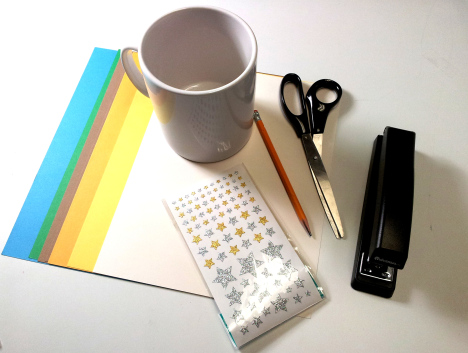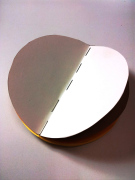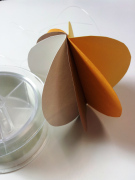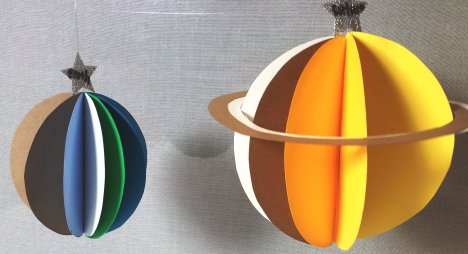What is a simply DIY craft project that you and your space-crazed kid can complete together? Try making this easy, mess-free solar system to hang in your Blaster’s room!
The materials you need to complete this galactic task are as follow:
- Color paper
- Scissors
- Compass or several circular objects (mugs, bowls, plates, etc.)
- Pencil
- Fishing line
- Stapler
- Glue
- Star-shaped stickers (optional)
Steps:
- To create our hometown, Earth, you will need blue, green, brown, and white colored paper.
- To be precise, you can set your compass’ width to be 7 cm, which means the diameter of your circles will be 14 cm in total. Or you can use a large mug instead, and trace the outline onto the colored paper by using your pencil.
- Using your scissors, cut out the circles. Then, fold them in half.
- As shown in the image, stack the paper and staple across the crease that you just folded to keep the paper intact
- Then, fold the paper backwards to create a 3-dimensional shape.
- Tie the fishing line around the center seem.
- Tie a knot and your Earth is completed!
- Optional: You can purchase star-shaped stickers and use it as a label for the planet and to cover up the knot you tied in step 7.
- Repeat steps 1 to 8 to create Saturn, but this time, use orange, yellow, brown, and white colored paper instead, and set your compass’ width to 10 cm, or find a bigger circular object.
- To create the ring, simply create two circles in white and brown respectively that are just a tiny bit smaller than the ones you did to create the spherical shape of Saturn.
- Glue them together by slightly overlapping them, and slide it over the 3D Saturn.
- Repeat steps 1 to 8 to create the other planets, but make sure you alter the measurement of your compass slightly to show the scale between the different planets.
Note:
- The more circles you cut out, the more detailed your planets will look, but it will also be harder to staple all the paper together.
- Assist your kid when using the compass – the sharp tip can be hazardous.
Filed under: Crafts, Family Activities, Family Fun, Just for Fun, Newsletter, Parents and Kids | Tagged: Blaster, Crafts, DIY, Earth, Jupiter, mars, Math Blaster, Mercury, Neptune, Planets, Pluto, Saturn, Saturn Ring, Solar System, space, stars, Venus | Leave a comment »










 Since first landing on the floor of Mars’ Gale Crater on August 6, 2012, Curiosity has been busy investigating the Red Planet. The rover is essentially a portable laboratory, equipped with different types of technology so it can share all of its findings with us.
Since first landing on the floor of Mars’ Gale Crater on August 6, 2012, Curiosity has been busy investigating the Red Planet. The rover is essentially a portable laboratory, equipped with different types of technology so it can share all of its findings with us.


